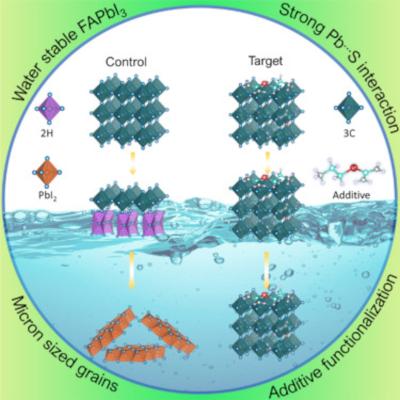Researchers from Spain's BCMaterials, University of Barcelona and IKERBASQUE have developed water stable perovskites, by adopting a unique additivization strategy to stabilize the FAPI alpha phase.
Thanks to their thermal stability along with a monocationic and anionic nature, formamidinium lead triiodide (FAPI) perovskites have emerged as an attractive material to avoid thermal degradation and phase segregation and promising photoactive materials for perovskite solar cells. However, the unfavorable phase transition from cubic (3C) to hexagonal (2H) due to the lower formation energy of the latter hinders its immediate use. Stabilizing the 3C phase of FAPI against atmospheric stresses is a critical challenge in PSC research, and the goal of this recent study.
The scientists opted for a bifunctional organic ammonium salt, i.e., S-(2-Aminoethyl)isothiouronium iodide hydroiodide, as an additive and explored its influence on structural, photophysical properties and phase stability of FAPI. Through the optimized additivization, they identified the lowest formation energy for an intermediate phase close to the 3C phase instead of the well-established photo-inactive 2H phase. Structure-photophysical property correlation studies demonstrated exceptional stability against water infiltration, humidity, shelf life, and thermal stresses.
The team's findings, through experimental and theoretical studies, substantiated the role of Pb…S interaction in stabilizing the perovskite cubic phase and the stoichiometric distribution of elemental components.


